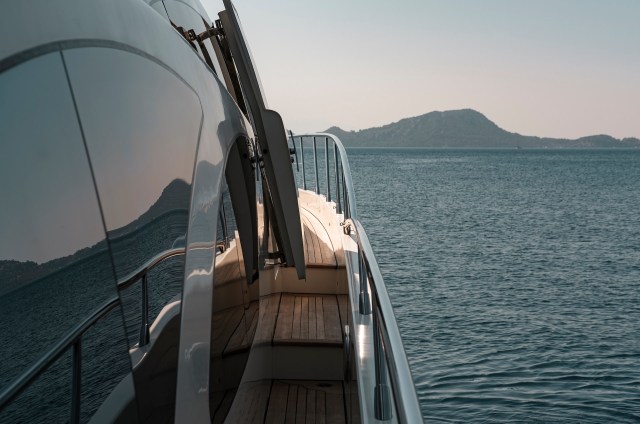The Rise of Deep Blue: A Superyacht with a Controversial Legacy
When it comes to luxury, the term “superyacht” often evokes images of opulence, exclusivity, and grandeur. But what happens when that luxury crosses into the realm of controversy? Enter Deep Blue, a $450 million megayacht that has recently captured global attention—not just for its size and design, but for the environmental questions it raises.
At 440 feet long and with a volume of 9,000 gross tonnes, Deep Blue is no ordinary vessel. It’s one of the largest private yachts in the world, and its sheer scale makes it impossible to ignore. Built by the renowned German shipyard Lürssen, this superyacht joins an elite group of luxury vessels such as Azzam, Eclipse, and A+. According to reports from luxury media outlets, Deep Blue is described as a “beast in the making,” with a striking shark-gray hull, sleek decks, cascading mirrored staircases, and a bold, tiered aft.
The yacht is powered by eight MTU engines and is expected to be delivered later this year. Once completed, it will rank as the 24th-longest yacht globally. However, despite its impressive specifications, the vessel has been shrouded in secrecy since construction began in 2021. While the design studio behind Deep Blue remains unconfirmed, industry insiders speculate that either Espen Øino or Nuvalari Lenard could be responsible, given their history of collaboration with Lürssen.
Another mystery surrounding the yacht is its owner, who is rumored to be either an Indian or Chinese billionaire. This anonymity adds to the intrigue but also raises questions about the motivations behind such a massive investment in a vessel that is as much a symbol of wealth as it is of environmental impact.
Environmental Concerns and Public Reaction
The recent release of images of Deep Blue has left many in awe, but not everyone is celebrating. The sheer size of the yacht has sparked debate about its environmental footprint. Yachts of this magnitude are known for their high fuel consumption and carbon emissions. For example, they can burn thousands of gallons of fuel per day and emit thousands of tons of carbon dioxide annually—equivalent to the annual emissions of an average American.
This level of pollution has led to growing concerns among climate advocates, who are calling for stricter regulations on maritime emissions. Alternatives such as hydrogen-powered vessels and cleaner fuels are being explored as potential solutions. Yet, Deep Blue stands as a stark reminder of how different the rules can feel depending on one’s perspective.
While cities are banning plastic bags, airlines are charging for carbon offsets, and communities grapple with wildfires, droughts, and floods, megayachts like Deep Blue continue to operate without significant restrictions. This contrast highlights a broader issue: the tension between luxury and responsibility in an era of climate crisis.
A Question of Value
The question isn’t whether Deep Blue is impressive—it undoubtedly is. The real challenge lies in determining whether this kind of luxury has a place in a world that is already running out of time. As the conversation around sustainability grows louder, the presence of such a massive and polluting vessel serves as both a marvel and a cautionary tale.
For those interested in learning more about environmental issues and how they affect our daily lives, there are numerous resources available. From free newsletters offering good news and useful tips to lists of easy ways to help both yourself and the planet, there are opportunities to make a difference.
As the world continues to grapple with the impacts of climate change, the story of Deep Blue reminds us that the choices we make—whether in luxury or in everyday life—have consequences that extend far beyond ourselves.







